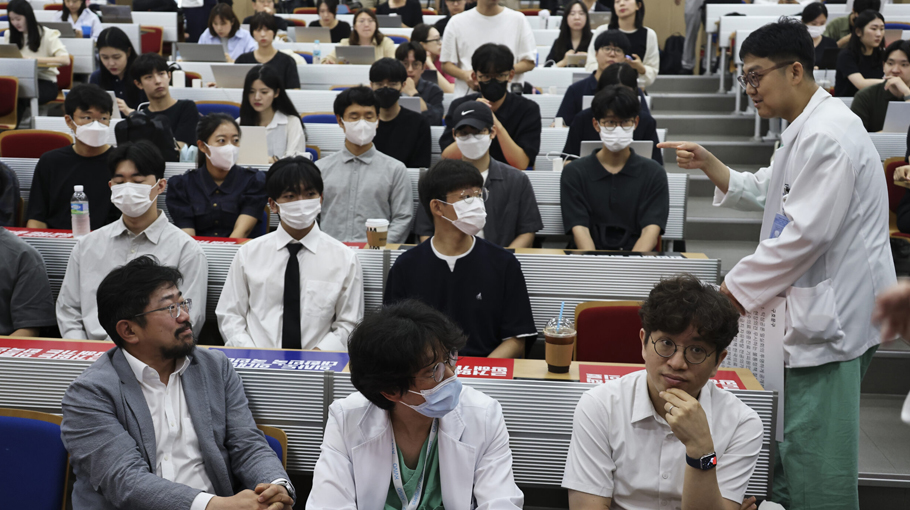South Korean and Japanese universities under pressure to lift tuition fees

With digital transformation, universities worldwide are investing heavily to keep pace with technological advancements, with a focus on generative artificial intelligence. But in South Korea and Japan, financial constraints pose significant challenges. South Korea’s prolonged tuition fee freeze has exacerbated financial difficulties for its higher education institutions, while Japan faces opposition to proposed tuition fee increases amid strict regulatory controls.
In Japan, the University of Tokyo has sparked opposition from students for considering a tuition fee increase. Since reforms to Japanese higher education in 2004 — when Japan’s national universities were restructured into university corporations — tuition fees have been set by each institution under a ministerial ordinance. This proposed increase of tuition fees in Tokyo University is being closely monitored for its impact on other national universities. Critics argue that higher fees could exacerbate inequalities and limit access to university education for students from lower-income families. Supporters claim that they are necessary to maintain the quality and competitiveness of Japan’s higher education institutions.
The issue looks even more serious in South Korea. After a tuition fee freeze in 2009, both national and private institutions have grappled with financial difficulties. The tuition freeze is formally a government recommendation, but in effect it is mandatory. The government has exerted pressure on universities not to raise fees under financial penalty for non-compliance. Universities, reliant on government funding, have reluctantly complied.
But from 2022, some universities, out of desperation, began rationalising tuition fees. In 2023, 26 private universities have raised tuition for the 2024 academic year. Universities argue that the freeze limits their ability to improve facilities, attract top faculty and invest in research and development. After 15 years, even students have started to propose tuition increases as a way of delivering a better learning experience and support services on campus.
Historically, the student movement has had significant influence on the debate over tuition fees in South Korea. The call for controlled or reduced tuition fees grew louder after many universities continued to increase fees above inflation following the 1997 Asian Financial Crisis. Rising tuition fees, opaque university decision-making processes, the accumulation of university reserves, private university corruption and concerns over education quality made tuition fees a contentious issue. By 2006, nationwide student protests in South Korea had mobilised effectively in pushing political parties to adopt ‘half-price tuition’ as a key campaign promise.
The 2008 Global Financial Crisis intensified the push for lower tuition fees. Under public and political pressure South Korea’s government began to curb tuition increases. Former president Lee Myung-bak’s administration introduced measures such as capping tuition hikes and establishing tuition review committees, though it faced criticism for not fully delivering on its half-price tuition promise. The administration created the Korea Student Aid Foundation in 2009 to provide student loans and income-contingent repayment plans.
Since 2009, as government control over tuition fees became more pronounced, university administrations became somewhat marginalised, with the state taking the lead. Tuition fee policies often featured prominently in presidential election campaigns.
The prolonged tuition freeze shifted South Korean universities’ revenue raising strategies, with increased reliance on government subsidies and a scramble for government funding. According to the Korean Council for University Education, in 2023 real tuition fees for four-year university degrees were 23 per cent lower than in 2008. The implementation of half-price tuition has substantially reduced tuition revenue, with private universities experiencing a revenue shortfall of up to 2.1 trillion won (US$1.5 billion) and public universities up to 380 billion won (US$275 million).
A consequence is growing disparities among universities. Some have resorted to tactics such as raising tuition for international and graduate students, who are often overlooked in the tuition policy debate. The recruitment of international students to generate revenue has had some negative byproducts like rising illegal residency.
The higher education scenes in South Korea and Japan share many similarities. Both countries have strong governmental influence on universities, with government dictating university operational policies and funding. This top-down control leaves universities with limited autonomy compared to Western universities. Both nations are famous for their highly competitive university admissions processes. This competition is compounded by the hierarchical nature of their higher education systems, where institutional prestige affects graduates’ career prospects.
South Korea and Japan are also grappling with demographic challenges. Both countries are experiencing an ageing population, dropping birth rates, and a shrinking pool of university applicants. This demographic crunch poses long-term sustainability issues for their higher education systems, prompting governments to reconsider education policies.
In both countries, the debate about university tuition policies reflects broader concerns about the sustainability and accessibility of higher education in the face of both economic and demographic constraints. The pressure on university tuition freeze policies in South Korea and the potential tuition hikes in Japan highlight the challenges faced by higher education systems in ageing Asia.
The financial pressures on universities in both countries necessitate balanced tuition policies. Raising tuition fees could improve educational quality and infrastructure but might exacerbate inequities and limit access for low-income students. Keeping tuition fees stable ensures greater accessibility but risks financial strain on universities, potentially leading to declining educational quality and competitiveness. Policymakers must consider raising tuition fees to enhance financial sustainability and educational quality while ensuring accessibility and equity. Diversifying funding sources, enhancing financial aid and implementing transparent governance are also critical.
As South Korea and Japan navigate these challenges, their experience offers valuable lessons for other nations striving to balance affordability, quality and financial sustainability. How the dynamics between the market, higher education institutions and governments evolve will ultimately affect the competitiveness of each country’s higher education system as well as their national economies.
Kyuseok Kim is a PhD student in the Department of Education at Korea University.
Source: East Asia Forum




